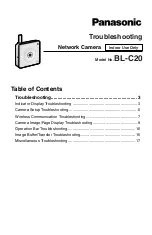
Bridge GUI Guide: Security Configuration
144
Individual User Authentication Settings
User authentication on the Fortress Bridge requires the usual
settings to identify, track and manage access for each user on
the Bridge-secured network.
Figure 4.11. Advanced View
User Database Entry
frame, all platforms
Administrative State
- determines whether user access to
the account is
Enabled
(the default) or
Disabled
.
Username
- identifies the user on the network—from 1 to 16
alphanumeric characters—required.
Full Name
- associates the person, by name, with his/her
user account—up to 64 alphanumeric characters, including
spaces, dashes, dots and underscores—optional.
New/Confirm Password
- establishes the credentials the
user must key in to access his/her user account—must
comply with the password requirements configured in
Configure
->
Security
->
Logon Settings
required.
NOTE:
Adminis-
trative roles are
described in Section
2.2.2.3.
Role
- Determines whether the user is a Secure Client user
permitted access to only the Bridge-secured network
(
None
) or an administrator permitted access to both the
network and to the management interface of a remote or
local Bridge—at the specified level of privileges (
Log Viewer
,
Maintenance
, or
Administrator
).
Idle Timeout
- sets the amount of time the user’s device can
be idle on the network before it must renegotiate keys with
the Bridge.
Idle Timeout
is set in minutes, between
1
and
720
. If you
enabled
Local Authentication
while leaving the local
authentication server’s
Default Idle Timeout
setting at its
default, the
Idle Timeout
value in the
User Authentication
Setting
frame will be
30
minutes.
Session Timeout
- sets the amount of time the user’s device
can be present on the network before the current session is
ended and he/she must log back in to re-establish the
connection.
Session Timeout
is set in minutes, between
1
and
200
. If
you enabled
Local Authentication
while leaving the local
authentication server’s
Default Session Timeout
setting at its















































